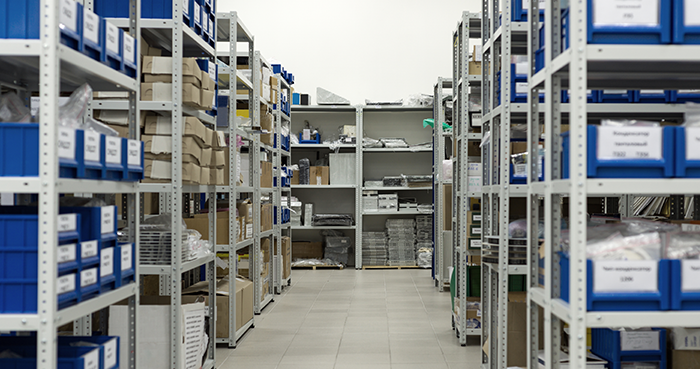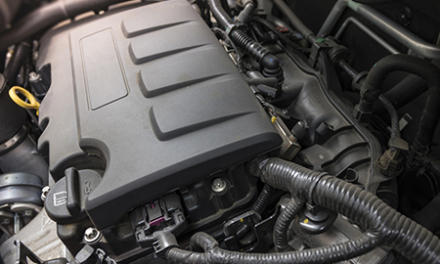Mechanical Fuel Pumps
Mechanical fuel pumps are low-pressure pumps commonly used in old vehicles that use carburetors in engines. They are commonly called as puller pumps because they use the suction ability to pull the gasoline through fuel pipe and up to the engine. Typically, mechanical pumps handle engines rated under 450 hp.
- Mechanism of operation
- Typically, mechanical fuel pumps are driven by a crankshaft which contains a camshaft having a cam lobe that operates a lever on the pump.
- The other end of the lever is connected to a diaphragm which goes down as needed to refill the pump chamber.
When the crankshaft spins, each rotation pushes the lever up which in turn pulls the diaphragm down with it. This builds suction in the pump to drag the fuel out of the tank into the fuel chamber. - A spring attached to the diaphragm will bring the diaphragm up back to its normal position thereby forcing the fuel from the pump chamber into the carburetor through outlet port.
- When the carburetor is full, no fuel is allowed from the pump chamber into it until the fuel is consumed by the engine and carburetor is ready to accept more gasoline.
The pressure at which the fuel is expelled from the mechanical pump is typically limited between 4 to 10 psi.
Common issues
The common issues of a mechanical fuel pump include leakage of fuel into the crankcase due to a ruptured or leaky diaphragm, vapor lock in the pump, fuel pressure drop, faulty diaphragm spring etc.
Electrical Fuel Pumps
Electric fuel pumps are designed for boosted engines such as fuel injection that require higher flow rates and pressure outputs. Electric fuel pumps deliver gasoline under high pressure from the gas tank to the injectors, typically ranging between 30 to 200 psi. Electric pumps are pusher pumps because they generate positive electrical pressure to push the fuel in fuel lines to the engine. The pumps are typically in-tank or externally mounted and come in a variety of pumping mechanisms such as positive displacement pumps, roller vane pumps or turbine fuel systems.
- Mechanism of operation
- Instead of the camshaft, electric pumps use solenoid as an electromagnetic switch to create a pull on the diaphragm and to drive fuel into the chamber.
- When the ignition is on, the Powertrain Control Module (PCM) of engine energizes the relay and supplies voltage to the pump which makes the motor to spin and build pressure in the fuel.
- This makes fuel to run through the inlet and mesh filter where it develops positive pressure and gets pushed to the outlet valve through the fuel line.
- To avoid dirt or other solid contaminants clogging the injector valves, the fuel is passed through a filter before exist and is routed to the individual fuel injectors.
- To regulate the supply of fuel at the proper pressure within the specifications of the engine, electric pumps are equipped with pressure regulators at the end of the fuel rail which is fixed along with the unit inside the fuel tank.
The fuel injectors that are connected to the fuel rail remain closed until the Engine Control Unit (ECU) of the vehicle decides to send fuel into the intake manifold of multi-port fuel injection or directly to the cylinders of direct injection.
Common issues
Electric fuel pumps fail when there is fuel contamination due to dirt & rust, overheating of the engine due to low fuel level, wiring problems, failed pressure gauge etc. When fuel pump fails the vehicle encounters various issues such as whining noise from the fuel tank, difficulty starting the car, loss of power while accelerating, reduced fuel efficiency etc.



![[Vehicle Fitment]: Compatible with Kia Sorento 2005 2006 V6 3.5L [Reference Number]: 31150-3E230, 311503E230, 311503E230DS, 311503E500, E8676M, FG1260, P76142M, SP3036M [Package Contents]: 1 x Fuel Pump Assembly, Packaging Type: Box [Related Parts]: ...](https://m.media-amazon.com/images/I/41um+nTM5yL._SL160_.jpg)






![[Fit for Ford E150 models] 2003-2004 E-150 5.4L | 2003-2004 E-150 Club Wagon 5.4L | 1997-1998 E-150 Econoline 4.6L | 2000-2002 E-150 Econoline 4.6L | 1990-1996 E-150 Econoline 5.0L | 1997-2002 E-150 Econoline 5.4L | 1990-1996 E-150 Econoline 5.8L | 1...](https://m.media-amazon.com/images/I/41K8npit6ML._SL100_.jpg)

![[Vehicle Fitment]: Compatible with Dodge Dakota 2004-2010, Compatible with Durango 2004-2009, Nitro 2007-2011, Ram 1500 2004-2010; Compatible with Jeep Commander 2006-2010, Grand Cherokee 2005-2010, Liberty 2004-2012; Compatible with Mitsubishi Raide...](https://m.media-amazon.com/images/I/41n6pS4S7WL._SL100_.jpg)

![[Vehicle Fitment]: Compatible with Kia Magentis 2006-2010 L4 2.4L, Optima 2006-2010 L4 2.4L (Vin 3) [Reference Number]: 311102G100, 311102G100DS, E8782M, FG1730, P76430M, SP3023M [Package Contents]: 1 x Fuel Pump Assembly, Packaging Type: Box [Relate...](https://m.media-amazon.com/images/I/41NHWID2oQL._SL100_.jpg)

I have a 2004 chevy 2500hd with a 6.0 gas engine there are times when accelerating I loose power then once in awhile it will gain speed